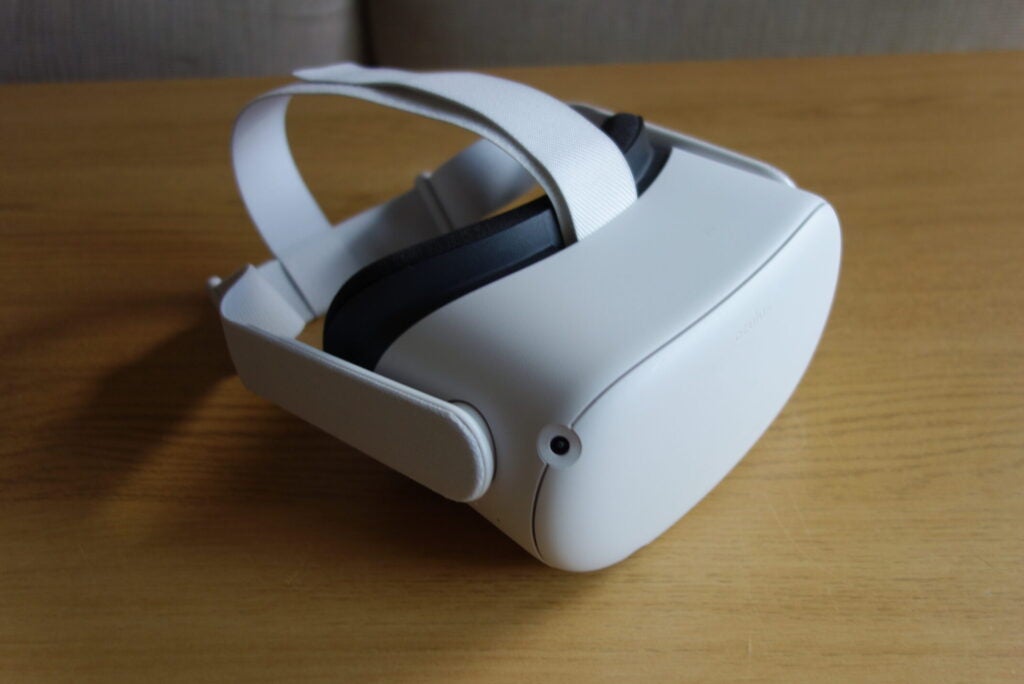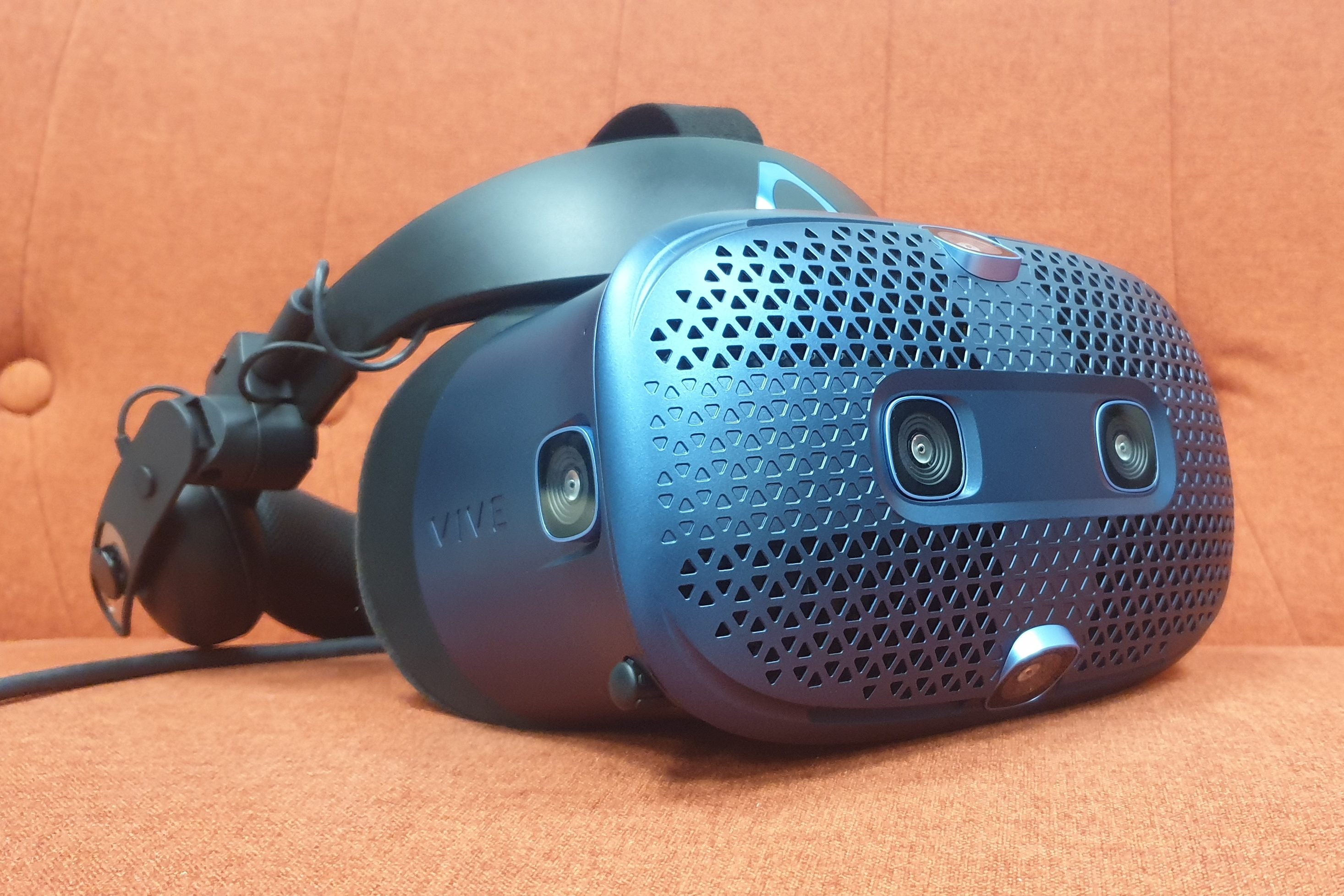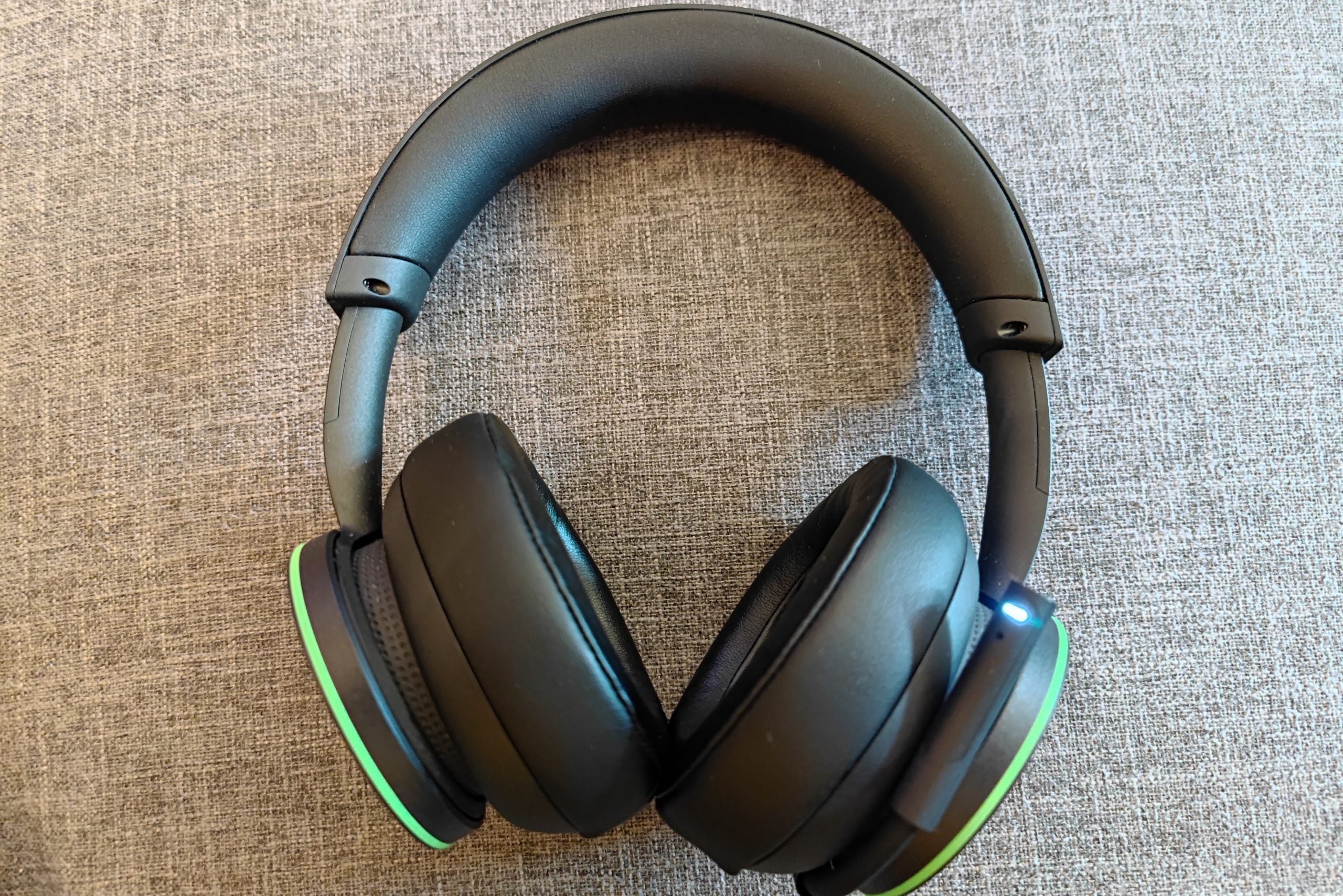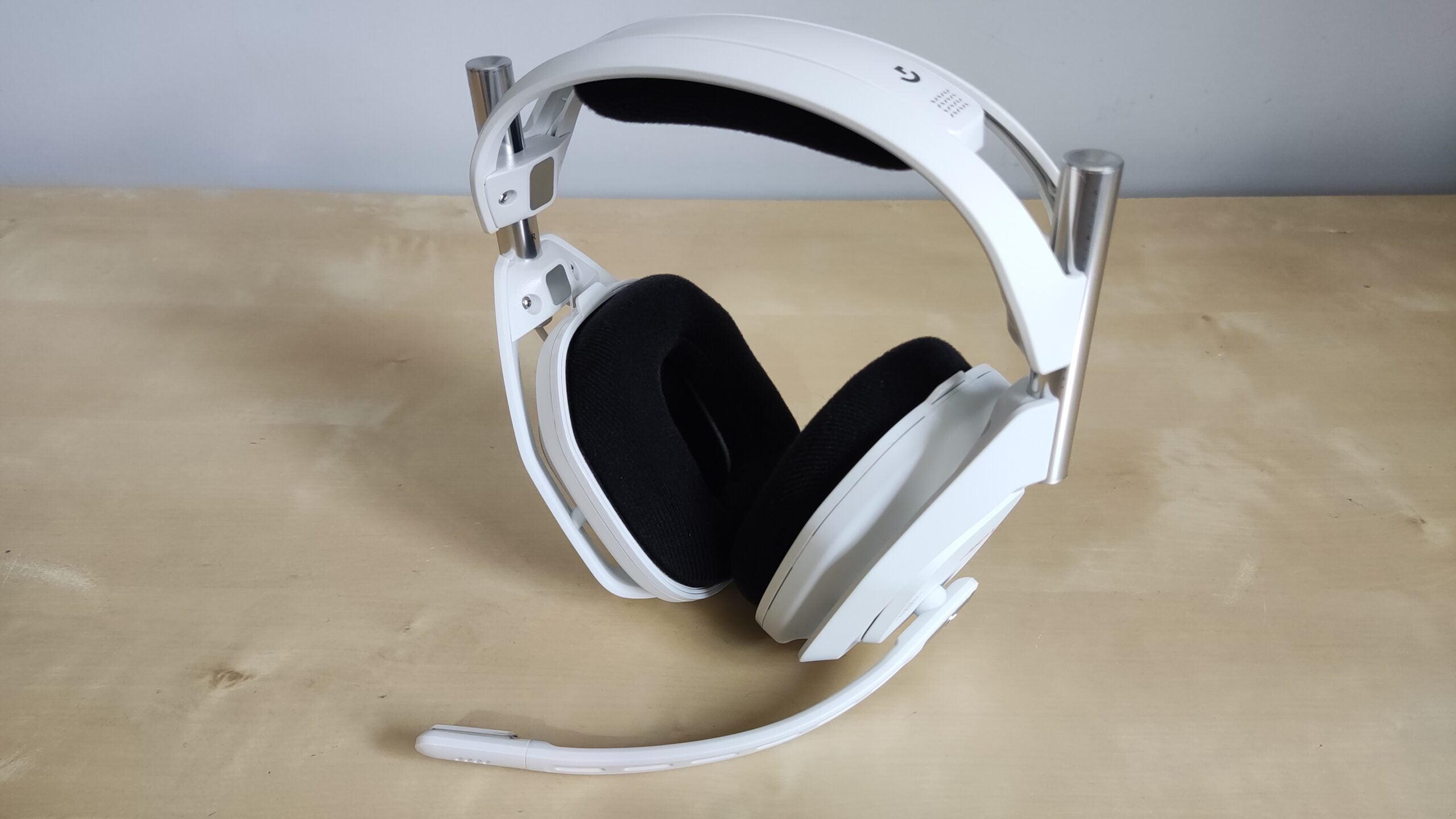Best VR headset 2024: Our top picks for virtual reality

Virtual reality has exploded over the past few years, offering far more immersive experiences than a standard console could ever hope to achieve. But with so many at varying price points, which is the best VR headset for you?
Do you want an all-in-one headset like the popular Meta Quest 3, or do you want something high-end like the Vive Pro 2 to play your PC VR games? What about game availability? There’s also the platform you’ll be playing on to consider – the PSVR 2 is the only headset that’ll work with a PS5, for example. You must also consider technical specs like FOV, resolution, display tech and more.
That might seem confusing, but our team of experts is here to help. The Trusted Reviews team has reviewed some of the biggest VR headsets currently available. Any VR headset with at least a 4-star rating is considered for this list, so you can be confident you’re splashing the cash on a top-quality device.
We know most people can’t afford to spend over a grand on a VR headset, so we’ve included a wide variety on this list. We’ve included headsets that can function all by themselves, as well as those that need a high-powered PC. As a result, every single kind of VR fan should be catered for.
And if you’re having second thoughts about getting into VR, it’s worth checking out our best games console and best gaming laptop lists instead.
Best VR headsets at a glance
- Best overall: Meta Quest 3 – check price
- Best value: Meta Quest 2 – check price
- Best for PS5 owners: PlayStation VR 2 – check price
- Most comfortable: Pico 4 – check price
- Best high-end: Vive Pro 2 – check price
- Best for AR: Meta Quest Pro – check price
How we test
Every VR headset we review goes through a series of uniform checks designed to gauge key things including build quality, comfort, screen quality, performance and the game library.
We’ll test a VR headset for at least a week, and test all of the available features. We’ll make sure to set it up multiple times to determine its accessibility and whether most homes would be able to accommodate it. We’ll also play a wide selection of games to see how the headset performs with each one.
And if a VR headset is wireless, we’ll make sure to measure the battery life, both when playing games and running basic apps.
 Best overall
Best overall
- Lightweight, compact design
- Impressive VR and MR experience
- Top-end performance
- Biggest library of apps of any standalone headset
- More expensive
- Battery life could be better
- Odd warping in passthrough mode
 Best value
Best value
- Fantastic wireless performance
- Improved screen resolution
- Massive library of games, especially with Oculus Link
- Relatively affordable price
- Battery life is still pretty short
- Oculus Link cable isn’t included, and is very expensive
 Best for PS5
Best for PS5
- Fantastic 5K resolution
- Improved refresh rate and FOV
- Comfortable design
- Faultless tracking performance
- Incredibly expensive
- Requires wired connection out of the box
- Controllers haven’t been updated
 Most comfortable
Most comfortable
- Wireless freedom for VR gaming
- Compact and lightwieght design
- High-resolution display
- Great performance
- Limited game library
- Lack of headphone jack
 Best high-end
Best high-end
- Stunning 4K OLED screen
- Sense controllers are huge improvement
- Stylish design and streamlined setup
- Haptic feedback improves immersion
- No backwards compatability
- More expensive than a PS5
- Can be uncomfortable after extended use
 Best for AR
Best for AR
- Relatively thin, lightweight design
- Great visuals
- Improved tracking with Quest Pro controllers
- Face- and eye-tracking are a boon for social VR
- Lack of killer AR apps
- Can get uncomfortable over long periods of wear
- Limited battery life

Meta Quest 3
Best overall
Pros
- Lightweight, compact design
- Impressive VR and MR experience
- Top-end performance
- Biggest library of apps of any standalone headset
Cons
- More expensive
- Battery life could be better
- Odd warping in passthrough mode
The Meta Quest 3 offers the most well-rounded VR experience of any VR headset on the market right now, elevating the already solid standalone experience from the Quest 2 with improved visuals, more processing power and more.
The Meta Quest 3 is a more compact headset than its predecessor, largely down to a new pancake lens system that also boosts visual clarity with less lens distortion than fresnel-based lenses. That means that, even without a significant boost to overall resolution, visuals look much more detailed on the newer headset.
That’s also down to the inclusion of the new Snapdragon XR 2 Gen 2 chipset, boasting not-insignificant upgrades including a 2.5x jump in GPU performance compared to the Quest 2’s XR 2 chipset. That means that VR titles that take advantage of the processing power can deliver not only higher quality textures but more detailed elements like realistic shadows that improve immersion.
There’s also impressive mixed reality support with a swathe of front-facing cameras that, when combined with the headset’s depth sensor, delivers an incredible mixed reality experience with virtual elements interacting with real-world objects.
Throw in much more compact controllers, the same 2-3 hour battery life as its predecessor and the biggest library of VR/MR apps and games of any VR manufacturer right now, and you’ve got a very tempting, very capable headset. It’s just a shame that it’s much more expensive than its predecessor, starting at £529/$499.
Reviewer: Lewis Painter
Full Review: Meta Quest 3 review

Meta Quest 2
Best value VR headset
Pros
- Fantastic wireless performance
- Improved screen resolution
- Massive library of games, especially with Oculus Link
- Relatively affordable price
Cons
- Battery life is still pretty short
- Oculus Link cable isn’t included, and is very expensive
Even with the release of the Meta Quest 3, the Meta Quest 2 remains the best value headset on the market, especially at a reduced £299/$299. It’s not only one of the most affordable picks, but can also function independently which means you don’t need an ultra-expensive gaming PC or console.
During the review, we were really impressed with the apps and games on offer, with the likes of Beat Saber and Superhot VR providing incredibly fun experiences. The Quest 2 will struggle (or even be incapable) of playing more complex games such as Skyrim VR without being plugged into a PC, but that’s a satisfactory compromise given how fun and accessible wireless play is.
We found the biggest downside of the Meta Quest 2 to be its battery life, with our testing showing it to last 2 hours while gaming, and 3 hours for video content. But it’s likely you’ll want frequent breaks anyway, given the nature of VR.
If you’re yet to try VR and want a great entry-level headset, the Quest 2 represents a great option.
Reviewer: Ryan Jones
Full Review: Meta Quest 2 Review

PlayStation VR 2
Best VR headset for PS5 owners
Pros
- Stunning 4K OLED screen
- Sense controllers are huge improvement
- Stylish design and streamlined setup
- Haptic feedback improves immersion
Cons
- No backwards compatability
- More expensive than a PS5
- Can be uncomfortable after extended use
The PlayStation VR 2 headset has a number of impressive features. It has a 4K OLED display, eye-tracking technology and built-in haptic feedback to increase the immersion tenfold.
It is important to note that this headset requires a PS5 to function, and doesn’t offer the wireless freedom that the Meta Quest 3 and Pico 4 do. But on the bright side, the PSVR 2 can leverage the power of the PS5, offering high quality experiences like Horizon Call of the Mountain.
The PSVR 2 is a big upgrade on its predecessor too, with more ergonomic controllers and a streamlined setup that only requires a single USB-C connection.
But is the PlayStation VR 2 worth the steep price when the Meta Quest 3 is available at a lower fee? That will depend on its game support; if PlayStation can keep pumping out first-party games like Horizon, this may well become the best VR headset on the market.
Reviewer: Ryan Jones
Full Review: PlayStation VR 2 Review

Pico 4
Most comfortable VR headset
Pros
- Wireless freedom for VR gaming
- Compact and lightwieght design
- High-resolution display
- Great performance
Cons
- Limited game library
- Lack of headphone jack
The Pico 4 offers the closest experience to the Meta Quest 3 headset, with an all-in-one design that doesn’t require any cables or external PC to function. It even surpasses the Quest in certain areas.
Firstly, the Pico has a better design. Weighing just 295 grams, it’s lighter than every other headset on this list. The use of a plastic headband also ensures a secure fit, so you shouldn’t have to worry about adjusting it on your head every few seconds. Overall, this results in a more comfortable experience.
The Pico 4 also has a superior screen resolution compared to the Quest 2, though it’s matched more closely by the newer Quest 3. Our testing showed that this helped to create sharper images, with individual pixels becoming less noticeable. The headset even features colour passthrough, allowing you to see your surroundings even when the headset is hugging your face.
The only major thing holding the Pico back from beating the Quest is its substandard game library. It’s missing a number of VR game gems, including Beat Saber, Resident Evil 4 and Moss. As a result, we suggest you check out the Pico game’s library before you commit yourself to a purchase of the headset.
Reviewer: Ryan Jones
Full Review: Pico 4 Review

Vive Pro 2
Best high-end VR headset
Pros
- Fantastic 5K resolution
- Improved refresh rate and FOV
- Comfortable design
- Faultless tracking performance
Cons
- Incredibly expensive
- Requires wired connection out of the box
- Controllers haven’t been updated
The Vive Pro 2 provides the very best virtual reality experience of all the headsets on this list, with a super-sharp 5K resolution, faultless tracking performance and a huge selection of immersive VR games and apps.
But with the headset retailing for over £1000 when bundled with the required accessories, it’s only really worthwhile for hardcore VR enthusiasts. The need for external tracking sensors also means you basically need to take up an entire room to maximise your enjoyment with the Vive Pro 2, which simply isn’t possible for everyone. And let’s not forget the need for a high-powered PC to plug the headset into.
If you adore VR and are happy to look past those obstacles, then you’ll be treated to one of the best VR experiences currently available. During testing, we were incredibly impressed with the likes of Half-Life Alyx and Paper Beast.
We also found the 120Hz refresh rate and 5K resolution to ensure you’re getting the absolute best visuals from a VR headset, even with the lack of an OLED screen. So if you want a top-notch VR headset and money is no issue, then the Vive Pro 2 is an awesome option.
Reviewer: Ryan Jones
Full Review: Vive Pro 2 Review

Meta Quest Pro
Best for AR
Pros
- Relatively thin, lightweight design
- Great visuals
- Improved tracking with Quest Pro controllers
- Face- and eye-tracking are a boon for social VR
Cons
- Lack of killer AR apps
- Can get uncomfortable over long periods of wear
- Limited battery life
The Meta Quest Pro is a more advanced beast than the entry-level Quest 2 and mid-range Quest 3, with a high-end £999/$999 price tag to match.
The Quest Pro introduces a number of firsts to standalone headsets including both face- and eye-tracking tech that has the potential to revolutionise social VR with more human-like interaction – at least it will be once the tech becomes more ubiquitous.
It’s the Quest Pro’s AR capabilities that stand out most though; using colour stereo passthrough, the headset can blend the real and virtual worlds into one, allowing you to, say, paint on a virtual canvas in your actual living room environment. Combined with hand-tracking that negates the need for controllers, it’s a very immersive experience.
However, that’s part of the problem with the Quest Pro; it’s not only expensive, but with Meta building the AR focus into the Quest 3, it makes the Pro slightly less tempting. It’ll remain the only Meta headset to offer premium features like face- and eye-tracking, but those are a nice-to-have rather than an integral part of the virtual experience.
As a result, it’s only a headset for those who want to be on the bleeding edge of VR tech.
Reviewer: Lewis Painter
Full Review: Meta Quest Pro Review
We also considered…
We’ve reviewed
See all reviewsFAQs
Nope. You simply need to pay an upfront fee for the headset, and then purchase games separately, just like a games console.












